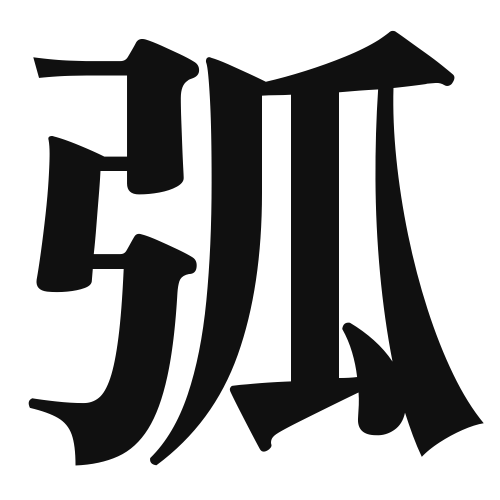1. Overview of Meaning
The kanji “弧” (ko) means “arc” or “curve.” It represents a part of a circle or a curved line, often used in mathematical and artistic contexts.
2. Formation and Radical
Formation of the Kanji: The kanji “弧” is a phono-semantic compound, which means it combines both a phonetic and a semantic component. The left part “弓” (yumi) represents a bow, indicating the curved shape, while the right part “可” (ka) contributes to the pronunciation.
Radical: The radical for “弧” is “弓” (yumi), which relates to bow-shaped objects and curves.
3. Examples of Usage
Common Words and Phrases: Some common words that include “弧” are “弧線” (kosen – arc line) and “弧度” (kodo – radian).
Example Sentences in Daily Conversation:
- この弧は円の一部です。 (Kono ko wa en no ichibu desu.) – This arc is a part of the circle.
- 数学の授業で弧度を学びました。 (Sūgaku no jugyō de kodo o manabimashita.) – I learned about radians in math class.
4. Synonyms and Antonyms
Similar Kanji: A similar kanji is “曲” (kyoku), which means “curve” or “bend,” but it can refer to a broader range of curves, not just arcs.
Opposite Kanji: An antonym could be “直線” (chokusen), meaning “straight line,” which represents the opposite of a curved shape.
5. Cultural and Historical Background
Relation to Japanese Culture: The concept of arcs and curves is significant in Japanese art and architecture, often symbolizing harmony and balance.
Proverbs and Idioms: While there may not be specific proverbs that use “弧,” the idea of curves is often associated with the beauty of nature, as seen in traditional Japanese gardens and landscapes.
